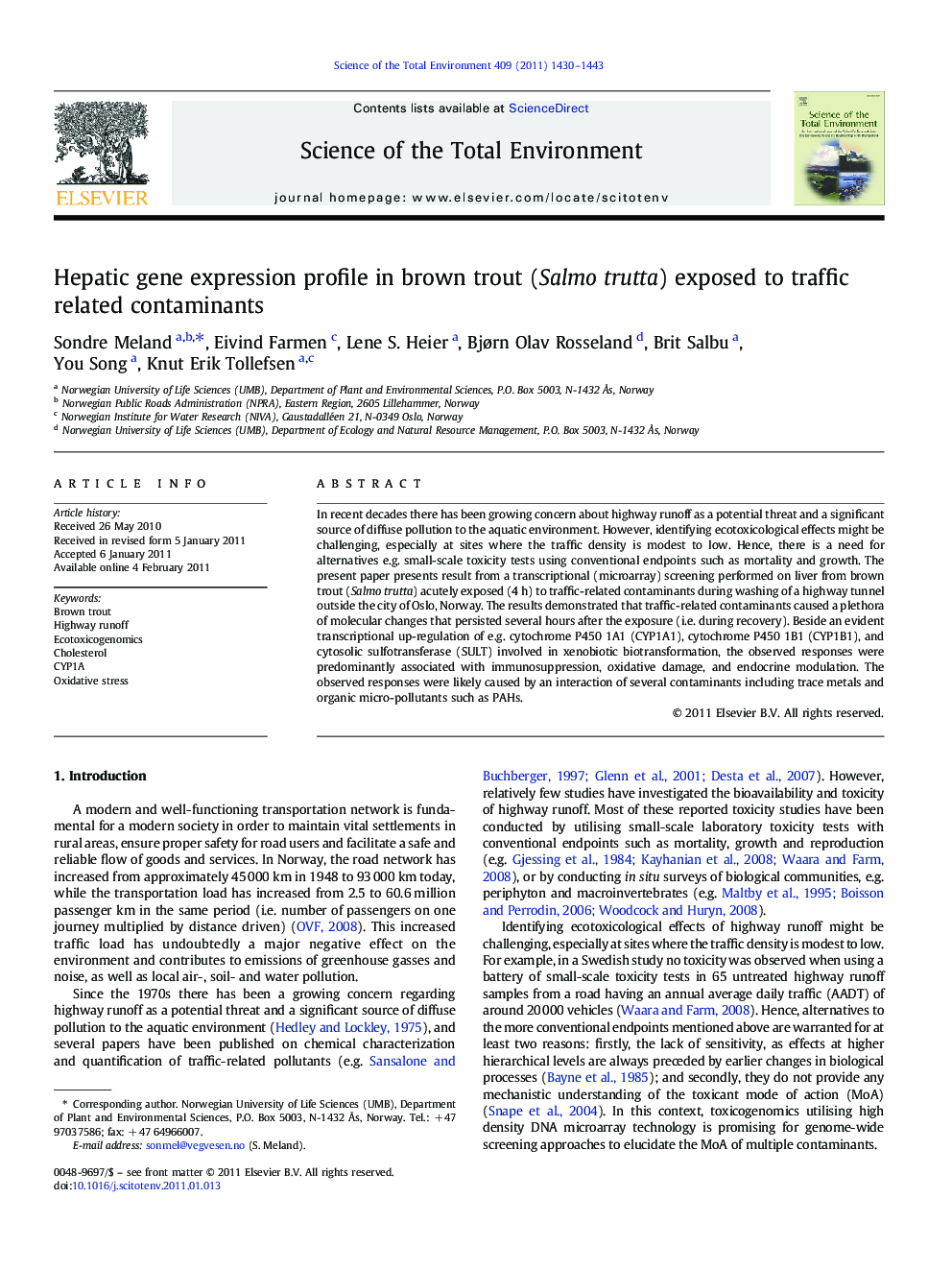| Article ID | Journal | Published Year | Pages | File Type |
|---|---|---|---|---|
| 4430853 | Science of The Total Environment | 2011 | 14 Pages |
In recent decades there has been growing concern about highway runoff as a potential threat and a significant source of diffuse pollution to the aquatic environment. However, identifying ecotoxicological effects might be challenging, especially at sites where the traffic density is modest to low. Hence, there is a need for alternatives e.g. small-scale toxicity tests using conventional endpoints such as mortality and growth. The present paper presents result from a transcriptional (microarray) screening performed on liver from brown trout (Salmo trutta) acutely exposed (4 h) to traffic-related contaminants during washing of a highway tunnel outside the city of Oslo, Norway. The results demonstrated that traffic-related contaminants caused a plethora of molecular changes that persisted several hours after the exposure (i.e. during recovery). Beside an evident transcriptional up-regulation of e.g. cytochrome P450 1A1 (CYP1A1), cytochrome P450 1B1 (CYP1B1), and cytosolic sulfotransferase (SULT) involved in xenobiotic biotransformation, the observed responses were predominantly associated with immunosuppression, oxidative damage, and endocrine modulation. The observed responses were likely caused by an interaction of several contaminants including trace metals and organic micro-pollutants such as PAHs.
Graphical AbstractFigure optionsDownload full-size imageDownload as PowerPoint slideResearch Highlights► Brown trout (Salmo trutta) was acutely exposed to road tunnel wash water. ► A transcriptional screening by microarray was performed on liver samples. ► A plethora of molecular changes were evident several hours after the exposure. ► Immunosuppression, oxidative damage and endocrine modulation were evident. ► The responses were likely caused by contaminants such as metals and PAHs.
